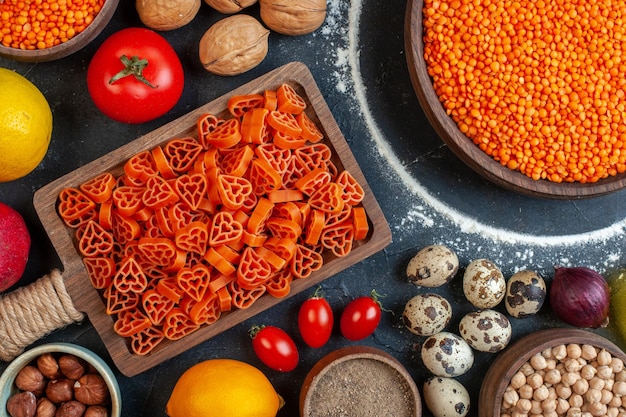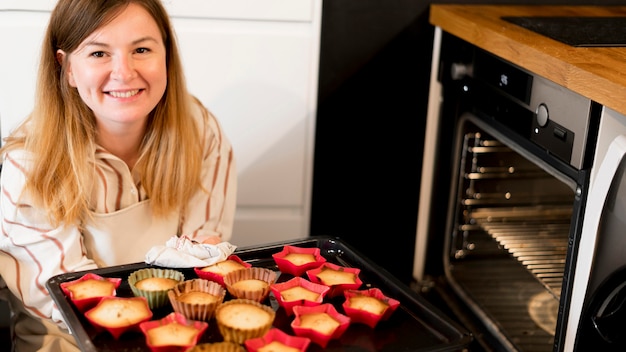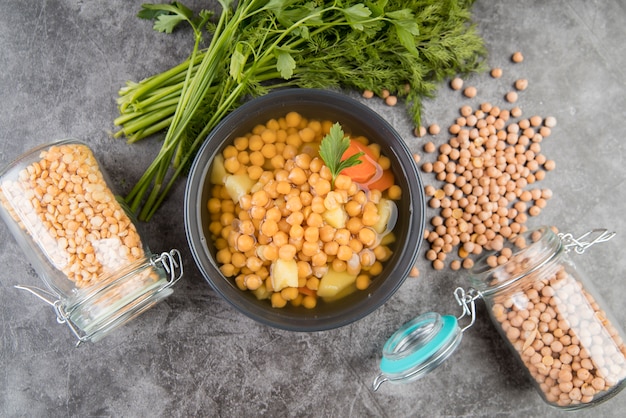You've got a bag of dried beans, a hankering for a hearty, wholesome meal, but you're staring at the instructions and thinking, "How long do I actually cook these things?!" Don't fret! Cooking dried beans can feel a little intimidating, but it's actually surprisingly simple once you get the hang of it. And trust me, the reward is well worth the effort. There's nothing quite like the flavour of homemade beans, cooked from scratch, simmering away on the stovetop.
I've been cooking beans for years, and I've learned a few tricks along the way. From the initial soaking to the final simmer, there are a few key things to keep in mind to get those beans perfectly tender and delicious. So grab a cuppa, settle in, and let's embark on this culinary adventure together.
Part 1: Choosing the Right Beans

The first step is picking your beans, and it's a delightful decision because there's a whole world of beans out there, each with its own unique character and flavour. You've got your classics like kidney beans, butter beans, and cannellini beans, each a staple in many kitchens. But there are also some more adventurous options like black-eyed peas, borlotti beans, and even fava beans, each adding a distinct touch to your dishes. It really comes down to your personal preference and the recipe you're planning to make.
For instance, I love using kidney beans for chilli. They hold their shape beautifully and soak up all the delicious flavours of the spices and other ingredients. Butter beans, on the other hand, are perfect for creamy soups and stews because their smooth texture melts away in your mouth. But, if you're feeling a bit adventurous, try some black-eyed peas in a salad or borlotti beans in a pasta sauce. They're truly versatile and can add a touch of something unexpected to your meal.
Picking the Right Beans for the Job:
- Kidney beans: Robust and hold their shape well, perfect for chilli, salads, and dips. Their earthy flavour and firm texture make them a crowd-pleaser.
- Butter beans: Creamy and smooth, excellent for soups, stews, and bean salads. Their mild flavour and delicate texture add a touch of luxury to your dishes.
- Cannellini beans: Mild and versatile, great for pasta sauces, salads, and dips. They have a slightly nutty flavour and a firm texture that holds up well in various dishes.
- Black-eyed peas: Slightly sweet and nutty, delicious in salads, stews, and rice dishes. Their subtle sweetness and soft texture make them a delightful addition to many cuisines.
- Borlotti beans: Earthy and rich, wonderful in pasta sauces, soups, and stews. Their intense flavour and slightly firmer texture add a satisfying element to your meals.
Part 2: Soaking the Beans

Now, here's where things get interesting. Most dried beans benefit from a good soak before cooking. It helps them cook faster and more evenly, leading to a smoother texture and a more pleasant eating experience. It also helps to break down some of the complex sugars, making them easier to digest. You can skip this step if you're in a pinch, but you'll likely end up with some tougher beans and a longer cooking time.
I usually soak my beans overnight. It's the most convenient for me, and it allows the beans to plump up nicely. Plus, there's something oddly satisfying about waking up to a bowl of soaking beans, ready to be transformed into a delicious meal.
Soaking Tips:
- Ratio: Use a 2:1 ratio of water to beans. So for 1 cup of dried beans, use 2 cups of water. This ensures the beans are fully submerged and have enough room to expand.
- Time: Soak beans for 8-12 hours. For smaller beans like black-eyed peas, 4 hours might be enough. Longer soaking times generally lead to softer beans.
- Temperature: Room temperature is perfect. There's no need to refrigerate the beans during soaking.
Part 3: The Art of Stovetop Cooking

Now, we're ready to get those beans cooking! You'll want a large pot with a tight-fitting lid. I always use a dutch oven for my bean cooking. It's great for holding heat and preventing splattering, ensuring a smooth and consistent cooking experience.
Firstly, drain the soaked beans and rinse them thoroughly. You'd be surprised how much sediment can collect at the bottom of the bowl after soaking! Then, add the beans to the pot and cover them with fresh water. You'll want about an inch of water above the beans to give them enough space to cook evenly.
Cooking Essentials:
- Pot: Choose a large pot with a lid. A Dutch oven is ideal for its heat retention and even cooking. A large saucepan with a tight-fitting lid will also work well.
- Water: Use enough water to cover the beans by an inch. This allows the beans to cook evenly and prevents them from sticking to the bottom of the pot.
- Heat: Start with high heat to bring the water to a boil. Then reduce to a simmer. This ensures the beans cook quickly and evenly, without burning.
- Time: Cooking times vary by bean type, check the package for guidance. Generally, beans need to simmer for 30-60 minutes, but larger beans might take longer.
Part 4: Cooking Time Decoded
Ah, the million-dollar question: how long do you cook those beans? Well, there's no magic number. It all depends on the type of bean and how you like them cooked. Generally, you'll want to simmer the beans until they're tender but not mushy. That sweet spot can vary from about 30 minutes for smaller beans like black-eyed peas, to a good hour or more for larger beans like kidney beans.
To check if they're done, simply scoop out a few beans and give them a gentle press with your finger. If they easily mash, they're ready to go! You can also use a fork to test the tenderness. The fork should easily pierce the bean without resistance.
Beans Cooking Time:
| Bean Type | Cooking Time (Unsoaked) | Cooking Time (Soaked) |
|---|---|---|
| Black-eyed peas | 1-1.5 hours | 30-45 minutes |
| Kidney beans | 1.5-2 hours | 45-60 minutes |
| Butter beans | 1-1.5 hours | 30-45 minutes |
| Cannellini beans | 1-1.5 hours | 30-45 minutes |
| Borlotti beans | 1.5-2 hours | 45-60 minutes |
Part 5: The Secret Ingredient: Flavour!
Now, let's talk about flavour. Don't just chuck those beans in a pot of water and call it a day! There are so many ways to boost the flavour of your bean dish. A few additions can make all the difference, transforming your beans from ordinary to extraordinary.
For example, a bay leaf adds a subtle earthy aroma, reminiscent of warm woods and a comforting kitchen. A sprig of fresh rosemary or thyme adds a lovely herbaceous touch, bringing a touch of freshness and complexity to the dish. And a pinch of salt, well, it's essential for bringing out the best in those beans, enhancing their natural flavours and adding a touch of depth. Some people swear by adding a tablespoon of vinegar or lemon juice to the pot as well. It helps to soften the beans and adds a subtle tang, balancing the richness of the beans and making them more palatable.
Flavour Boosters:
- Bay leaf: Earthy and aromatic, adds a subtle depth to the beans.
- Herbs: Rosemary, thyme, parsley, and oregano are classic choices, adding fresh, herbaceous notes.
- Salt: Essential for seasoning and enhancing the natural flavour of the beans.
- Vinegar or lemon juice: Softens beans and adds a tang, balancing the richness of the beans.
- Onion and garlic: Adds a depth of flavour and a savory aroma to the beans.
Part 6: The Finishing Touches
Your beans are cooked, they're tender, they're delicious. But wait! There's one more crucial step: the finishing touches.
Once the beans are cooked, you'll want to remove them from the heat and let them cool down slightly. This helps to prevent them from becoming mushy and preserves their texture. Then, you can use a slotted spoon to transfer them to your desired dish. And here's a little secret: if you want to add extra richness and creaminess, you can blend a portion of the cooked beans into a smooth paste using an immersion blender. Mix it back into the pot to make a luscious, creamy base for your dish.
Remember, beans can be used in a countless number of dishes. You can enjoy them in a simple salad, a hearty soup, or a spicy chilli. You can even use them as a base for a veggie burger or a filling for a burrito. The possibilities are endless!
Finishing Touches:
- Cool down: Allow beans to cool slightly to prevent over-cooking and preserve their texture.
- Blend some: For extra creaminess, blend a portion of the beans into a smooth paste. It adds a luscious texture to soups, stews, and dips.
- Get creative: Use beans in soups, stews, salads, dips, and more. They're incredibly versatile and can be adapted to a wide range of cuisines.
Part 7: Storing Your Bean Masterpiece
Let's be real, sometimes you're going to cook a whole batch of beans and only use a portion for your current meal. But don't worry, those leftover beans are a culinary treasure! They can be stored in the fridge for up to 5 days. Simply transfer the cooked beans to an airtight container and pop them in the fridge.
And if you're feeling extra organised, you can even freeze leftover beans for up to 3 months. Just make sure to transfer them to freezer-safe bags or containers, leaving some space for expansion. When you're ready to use them, defrost the beans in the refrigerator overnight.
Storing Leftovers:
- Refrigerate: Store cooked beans in an airtight container for up to 5 days. They can be reheated on the stovetop, in the microwave, or used in cold dishes.
- Freeze: Freeze cooked beans for up to 3 months in freezer-safe bags or containers. Defrost them in the refrigerator overnight before using.
Part 8: Bean Cooking: Beyond the Stovetop
Now, while we're on the subject of beans, let's talk about other cooking methods. Yes, the stovetop is the classic way to go, but there are other options! If you're looking for a hands-off approach, consider using a slow cooker. You can just toss the beans, water, and seasonings into the slow cooker, set it on low, and forget about it for 6-8 hours. The slow cooker's gentle heat allows the beans to soften beautifully and absorb the flavours of the seasonings.
And if you're a fan of all things automated, a pressure cooker is your new best friend. It cooks beans in a fraction of the time compared to stovetop cooking. Just add the beans, water, and seasonings, pressure cook for 20-30 minutes, and voila! Tender, delicious beans. The pressure cooker's steam cooks the beans quickly and evenly, saving you time and energy.
Alternative Cooking Methods:
- Slow cooker: Great for hands-off cooking. Cook on low for 6-8 hours. It's perfect for those busy days when you want a delicious meal without fuss.
- Pressure cooker: Fastest cooking method. Cook for 20-30 minutes. Ideal for those who need a quick and easy meal solution.
Part 9: FAQs
Now, you've probably got a few questions about all this bean talk. Let's get into some common queries about stovetop bean cooking:
1. Can I cook beans without soaking them?
You absolutely can, but it'll take longer. Unsoaked beans need to be cooked for longer, about 1.5-2 hours longer than soaked beans. So, if you're in a rush, soaking is definitely recommended. But if you don't have time, it's still possible to cook them without soaking. Just add extra water to the pot and cook them for a longer period. Be prepared to check the tenderness of the beans more frequently.
2. What happens if I overcook beans?
Overcooked beans become mushy and lose their texture. They can also become more difficult to digest. So, it's always best to err on the side of under-cooking rather than over-cooking. If they're a little firm, you can always cook them for a few more minutes. But if they're already mushy, there's not much you can do!
3. What if my beans are still hard after cooking?
Don't fret! Sometimes, even after cooking for the recommended time, beans can be a bit firm. If that happens, simply add more water to the pot and continue cooking until they reach your desired tenderness. You can also try adding a tablespoon of vinegar or lemon juice to help soften them up a bit. The acidic nature of vinegar or lemon juice helps to break down the tough outer layer of the beans.
4. Can I add ingredients to the pot while the beans are cooking?
You certainly can! In fact, it's a great way to add extra flavour. You can add things like onion, garlic, herbs, spices, and even diced vegetables to the pot while the beans are cooking. Just be sure to add them at the beginning of the cooking process so they have enough time to infuse their flavours into the beans. Adding them at the end will result in less flavour infusion.
5. Can I use canned beans instead of dried beans?
Of course! Canned beans are a great shortcut. They're already cooked and ready to use, so you can skip the soaking and cooking steps altogether. Just be sure to rinse them well to remove any excess salt or preservatives. Canned beans can be a great option when you're short on time, but the flavour and texture of dried beans cooked from scratch are unparalleled.
Part 10: Bean Magic: A Final Word
There you have it, folks! The secrets to cooking perfect beans on the stovetop. It's a simple process, but it requires a little patience and attention. But trust me, the reward is worth it. The flavour, texture, and versatility of homemade beans are truly something special. So get out there, grab a bag of beans, and start experimenting. You might be surprised at just how much you love them!
Everyone is watching

Corn on the Cob: The Ultimate Guide to Perfectly Cooked Ears
Healthy MealsAh, corn on the cob. Just the name evokes images of sunny days, barbecues, and that sweet, juicy flavour that ...

Scallops: The Ultimate Guide to Perfect Cooking
Healthy MealsAh, scallops. Those delicate, sweet, and utterly delicious morsels of the sea. They hold a special place in my...

Spaghetti Squash: The Ultimate Guide to Cooking and Serving
Healthy MealsRemember that time you saw spaghetti squash at the supermarket, looking all bumpy and strange, and thought, "W...

Salmon Cooking Times: Perfect Guide for Every Recipe
Healthy MealsLet me tell you, cooking salmon is an art form. It's all about getting that perfect balance: juicy and tender,...

Ham Cooking Time: How Long to Bake, Smoke, or Boil a Delicious Ham
Healthy MealsAh, ham. It's a classic, isn't it? A real crowd-pleaser, especially around holidays. And when done right, it'...
